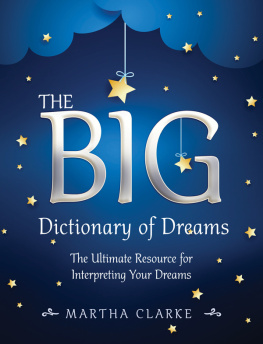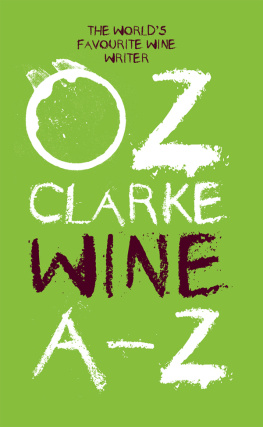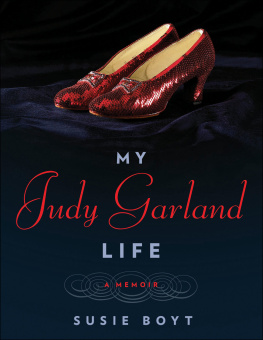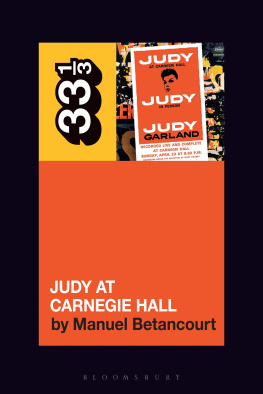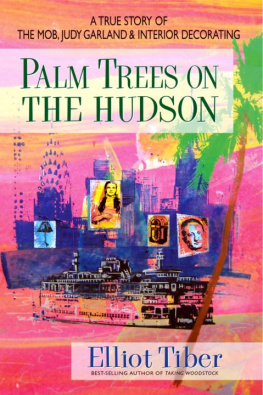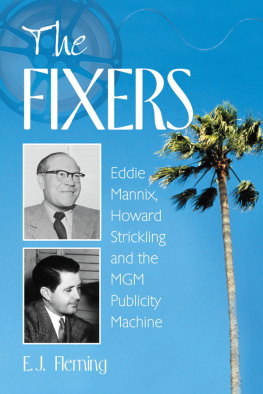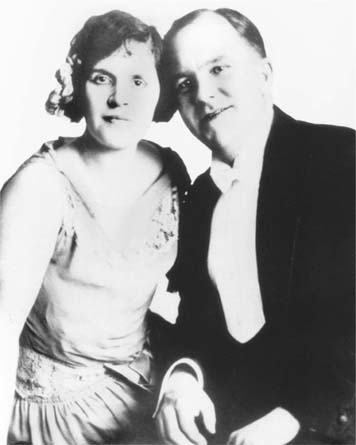
Frank and Ethel Gumm in their
vaudeville costumes
CHAPTER 1
Ethel and Frank
H e came from a little town in the South, and his smile was as spacious as summers sun. She came from an even smaller town in the far North, and her eyes, so dark that they were almost black, were as sharp as winters wind. But for both of them, the home of the heart was neither north nor south, nor in any other direction the compass pointed. It was a simple wooden platform, and it could be anywhere, any size, any shape: no stage was ever too mean or insignificant for Frank and Ethel Gumm.
They had grown up to the sound of applause, and they met, in late 1911 or at the beginning of 1912, at the Orpheum Theatera picture house, as such places were then calledin Superior, Wisconsin, a rowdy, lively port at the western end of Lake Superior. The city, which still retained much of its frontier exuberance, boasted many such establishments, and the creaky wooden sidewalks of its main street, Tower Avenue, were crowded with people just like them, all eager to break into the big-time world of vaudeville.
Ethel pounded out the background music for the films that flickered on the Orpheums screen. Frank sang the songs of the day while the reels were being changed. Far from his home in Tennessee, he rented a room from her parents, John and Eva Milne, and romance blossomed. It died when he suddenly upped and left, then unexpectedly sprang to life again when he returned many months later, in the late summer or the fall of 1913. He took a job at the Parlor Theater, she played the piano at the Lyric, which was across Tower Avenue, and they picked up where they had left off.
This time Frank did not bolt, and on December 31, 1913, they were issued a marriage license by the Douglas County clerk. There was apparently still some reluctance to take the final step, however, and Frank carried that weighty document around in his pocket for more than three weeks. But at five oclock on the afternoon of Thursday, January 22, 1914, their roller-coaster courtship ended at last. Standing before a newly ordained Episcopalian priest, they exchanged vows in the parlor of the Milnes house on Banks Avenue. Ethel wore a gown of ivory silk and carried a bouquet of roses. Her younger sister, Mary, was her maid of honor, while Alfred Street, Jr., who was often seen at the Superior theaters, stood up as best man for Frank.
After the bridal dinner, the little wedding party bundled up against biting winds and temperatures that hovered just a few degrees above zerowinter is a serious affair in that part of the worldand crossed the St. Louis River to the neighboring city of Duluth, Minnesota. There the festivities continued in a box Ethels father had reserved at Duluths leading vaudeville house. Topping the bill that night was one of the eras most popular singers, Ernest R. Ball, whose best-known song might have been written for the occasionLove Me and the World Is Mine, it was titled. With its sweet lyrics still humming in their ears, the young coupleshe was twenty and he was twenty-sevensaid their good-byes and boarded a train for their honeymoon in Minneapolis and Chicago.
The motion-picture era was just starting, but one scenario was already a screen standard: boy meets girl, boy and girl part, boy and girl are reunited for a happy ending. And that familiar script, observed the Superior Evening Telegram, was the one that had been followed so faithfully by the happy bride and groom. Their romance, said the paper, had rivaled some of the melodramas shown in the theaters in which they worked: fate, which is the arch enemy of the god of love, had separated them; but they had found their way back to each other, allowing Cupid to triumph in the end, as he always does in good moving picture plots. But good moving picture plots never tell everything. So it was with the sentimental scenario the newspaper had sketched for Frank and Ethel: their story, then and later, was not what it appeared to be.

After leaving Tennessee, sometime between the end of 1910 and the first part of 1911, Frank had traveled through several states before arriving, in the fall of 1911, at the Head of the Lakes, as the Duluth-Superior area was called by its boosters. He was to travel through many more states before he returned in 1913. Ethel, by contrast, had never ventured far from the often turbulent waters of Lake Superior, the largest of all the Great Lakes, near which she had been born, had grown up, and now had married.
Her parents were Canadian. Her father, John Milne (Milne was pronounced with one syllable and rhymed with kiln), was the son of Scottish immigrants. Born in Hamilton, Ontario, in 1865, he was a rail-roadman, as his father had been, and he had crossed the border in 1888 to take a job with the Duluth, South Shore & Atlantic Railway, whose trains ran along the south shore of Lake Superior. Ethels mother, Eva Fitzpatrick Milne, most likely had also been born in Ontario, in the town of Cornwall in 1864. But her familyher father was a shoemakerapparently moved to Massena, New York, across the St. Lawrence River, when she was a child. It was most likely in Marquette, Michigan, a busy lake port like Superior, that John and Eva met. It was there that they married in 1890, and it was also there that Ethel, the first of their eight children, was born on November 17, 1893.
John Milne remained with the South Shore line for many years, advancing from fireman to engineer, from a job that had him shoveling coal into the locomotive boiler to one that had him actually driving the train. The Milnes lived in several towns in Marquette County, but it was Michigamme, where they lived from 1903 or 1904 until the late summer of 1910, that Ethel knew best. With no more than six hundred inhabitants, Michigamme provided few obvious amenities. Sanitation meant backyard outhouseseven the school relied on such uncouth facilitiesand winters were so bitter that money was made by hacking ice, sometimes as much as two and a half feet thick, from Lake Michigamme and shipping it to cities that lacked such natural refrigeration.
Yet if life in Michigamme could be harsh and forbidding, it also could be remarkably congenial. Amusements were all homemade. People in Michigamme did not pay to be entertained; they made their own fun. Most nights during the winter there was a dance, a basketball game, or a meeting of one club or another. When the snow melted in the spring, doors burst open and the residents rushed outside, like prisoners released from jail. On Independence Day the South Shore Line lowered its fares, and people from all over the county converged on Michigamme, which was famous for the enthusiasm with which it celebrated the nations birthday.
Energetic and outgoing, the Milnes had a prominent role in the life of the town, particularly its musical life. Both John and Eva sang and played instrumentshe, the violin; she, the pianoand in the early years of their marriage, they occasionally toured those northern precincts with their own medicine show, drawing the curious with their music, then coaxing them to buy an evil-tasting laxative that was derived from the bark of the cascara tree.
Some parents impart to their children a love of reading or of sports, and their offspring become writers or athletes. John and Eva taught a love of music, and their sons and daughters became singers and pianists. Performing was like breathing, and almost as soon as they began walking and talking the Milne children were singing, dancing or practicing on a keyboard. There was scarcely a waking hour when a chord was not sounded or a note was not struck in their house on Railroad Street. They may have lived in the backwoods, far from opera, symphony or vaudeville, but no family anywhere was more eager to please an audience than the Milnes of Michigamme.



